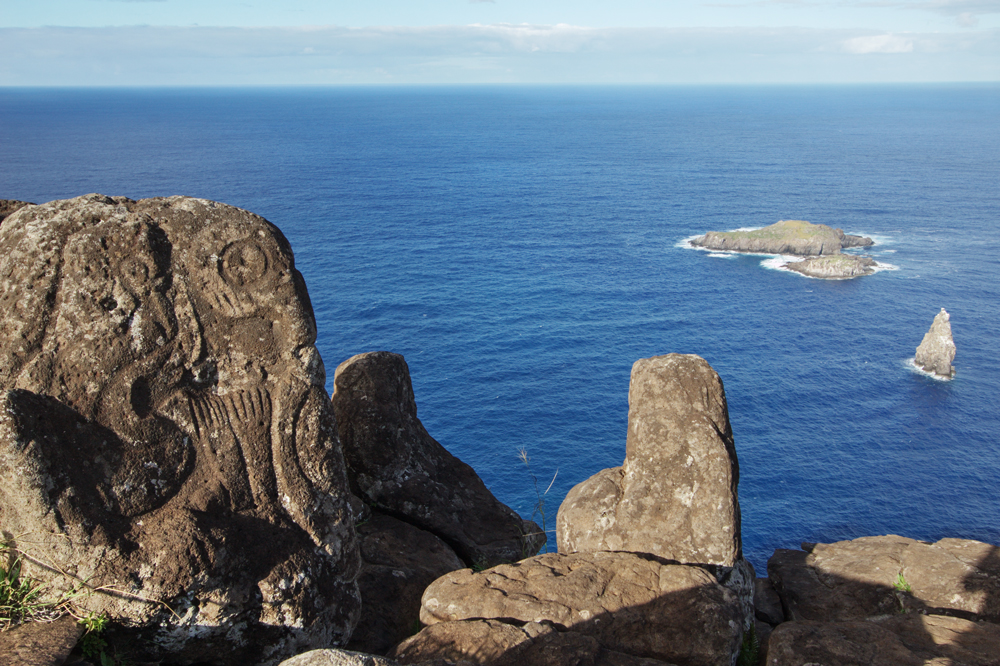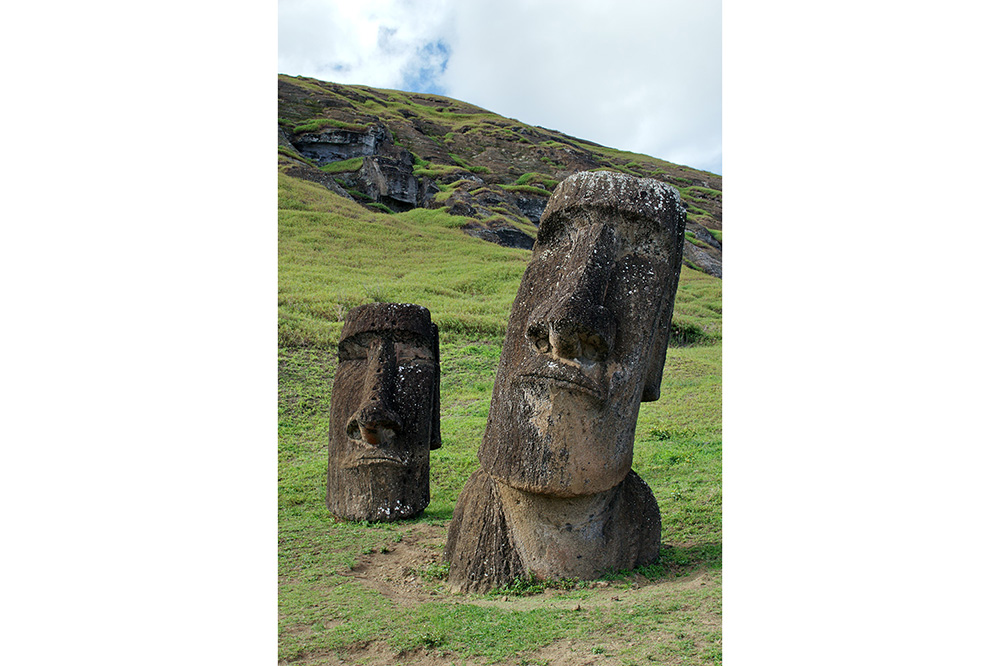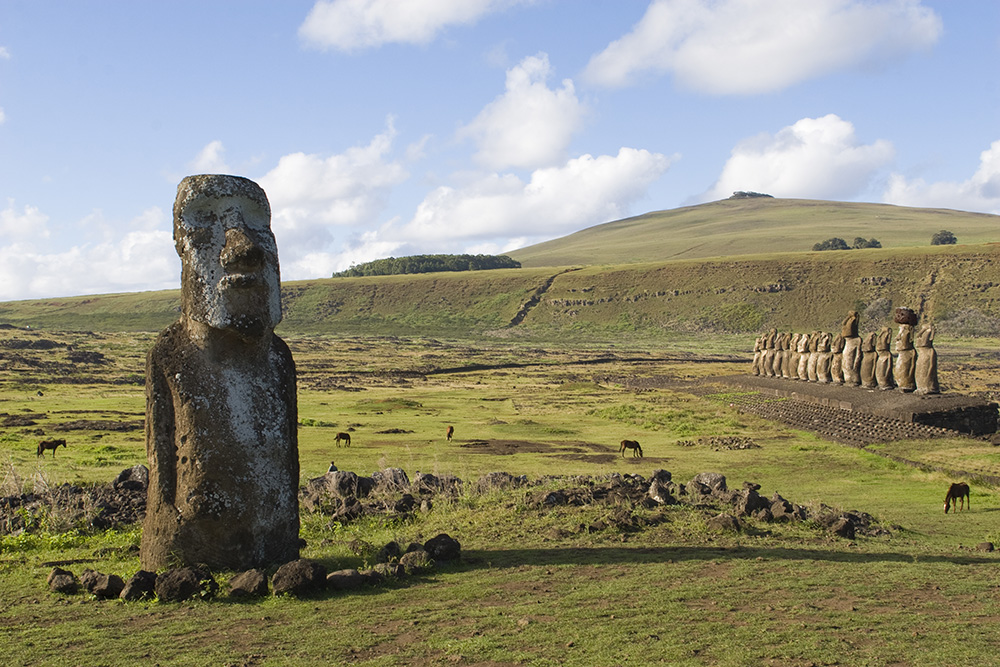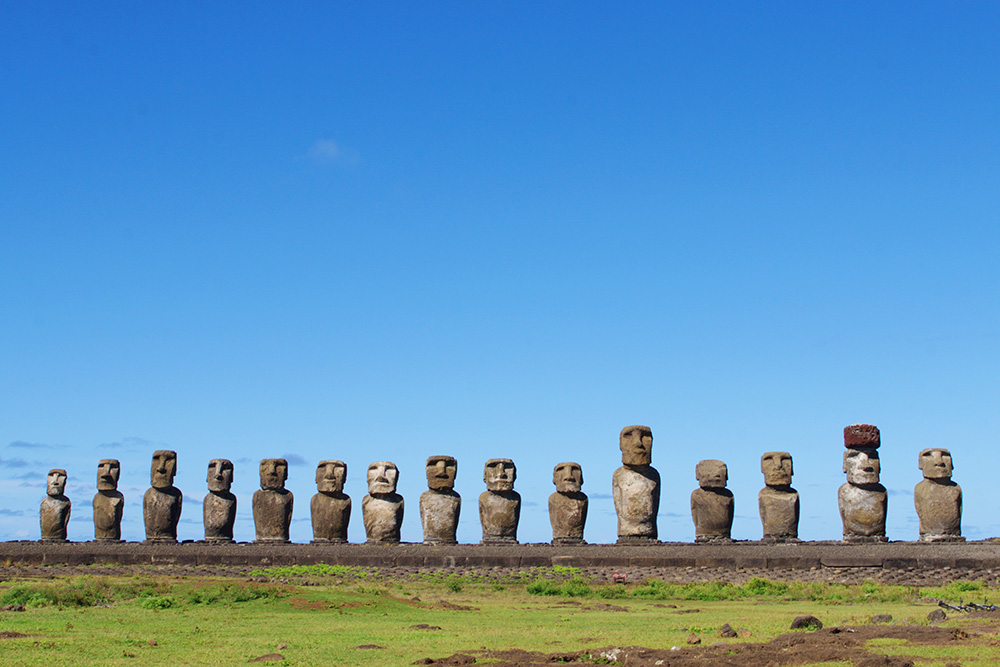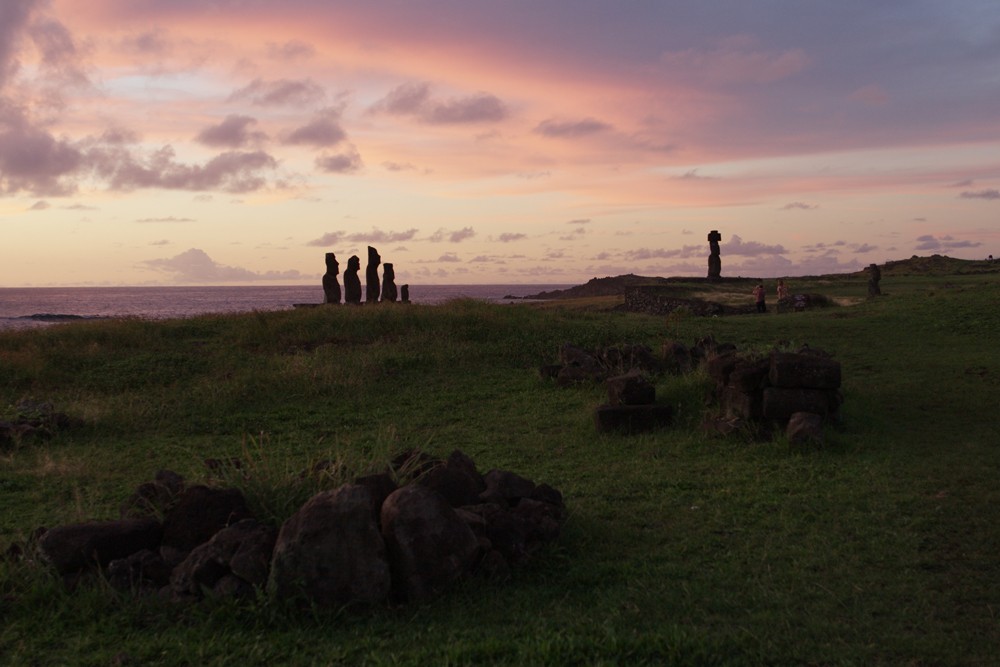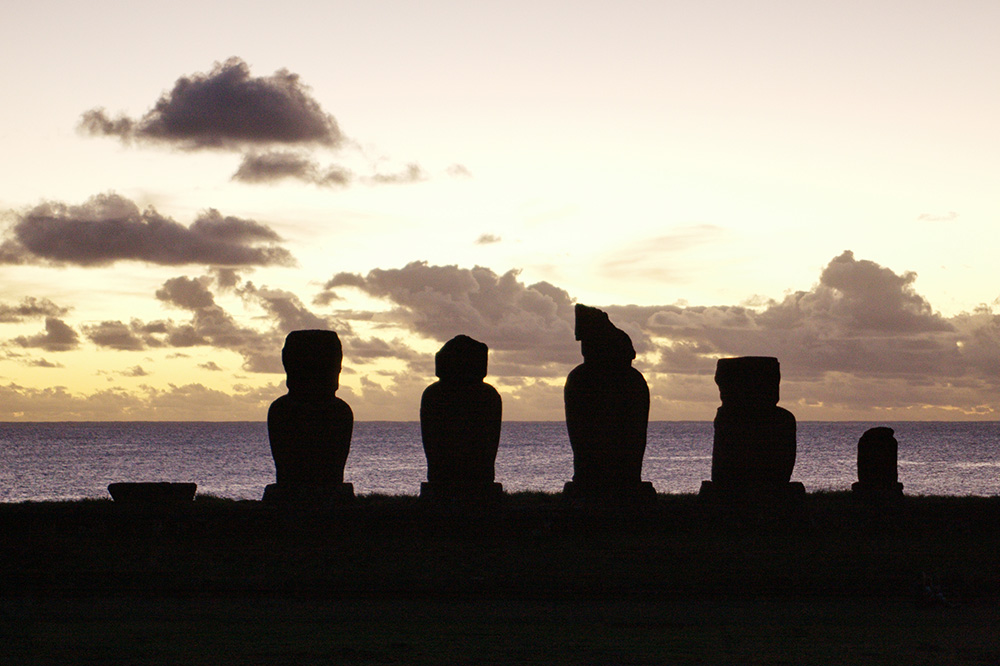More than 3,700 kilometers from the nearest land, Easter Island remains one of the most inaccessible and mysterious places on the planet. Many centuries ago, it was inhabited by people of a different civilization. Who were they, what were they like? We can only guess.
Moai of Rano-Raraku volcano
This is probably the most famous place on Easter Island. On the slope of a once active volcano facing the ocean, ancient statues (moai) stand. Here is their largest accumulation (about 300 of the total number of 887 statues discovered on the island to date). It is believed that this place was their quarry. The weight and size of the moai are not important, as numerous researchers give numerous and divergent data (up to 270 tons for the most massive statue).
To date, not much is known for certain: someone somehow managed to design, realize and erect it all in some unknown way. Local residents said that in the eighties, in order to restore Ahu Tongariki, located opposite the Rano-Raraku slope, a crane capable of carrying such a load was brought from Japan. But it’s not even about the load or the crane — it’s about the fact that only one of the two lifting mechanisms that had been built on Earth by that time managed to do this job.
Moai of Ahu Tongariki
Moai, as you remember, are the majestic statues of the island, and ahu are the pedestals on which they stand (Polynesian is very easy to learn!). These are the moai which required that very unique Japanese crane to be placed onto their ahu.
The fact is that most of the moai, before they were discovered by Europeans, had been toppled from their pedestals and the cause of this remains unknown. It is believed that the island’s natives vented their anger on the once-powerful gods who failed to fulfill their obligations. No one knows what really happened — the matter is old and dark. But the fact is that now the bulk of them are scattered all over the island, lying flat on their stomachs.
Moai ahu Tongariki, like almost all of their brethren, stand proudly with their backs to the ocean, gazing anciently and majestically into the distance. Far away across spaces and centuries. They are beautiful and unfathomable in their majesty. Perhaps just as beautiful and unfathomable as the images of contemporary politicians will look someday — time will tell. The height of the tallest of them (moai, not the politian) is 8.7 meters, which is quite a lot.
Anakena Bay Beach and Ahu Nau Nau
Fine sand, a quiet ocean, and almost no sharks. You can make yourself a cup of coffee in a wooden tent for just a dollar. Nescafé can, plastic spoon and a glass — that’s all a tourist need.
Silence, the sound of the waves. Just the sea and Homer. No strangers, it’s just us.
The sea and Homer – all is moved by love.
Whom should I listen to? And now, Homer is silent...
And black sea clamours, solemnly and loud,
And to my bedhead with the heavy roar is coming.
Osip Mandelstam
Puna Pau. Hills
You must be wondering what is that vegetable garden at the bottom of the hill. Even if you don’t ask, I’ll tell you — these are pineapples.
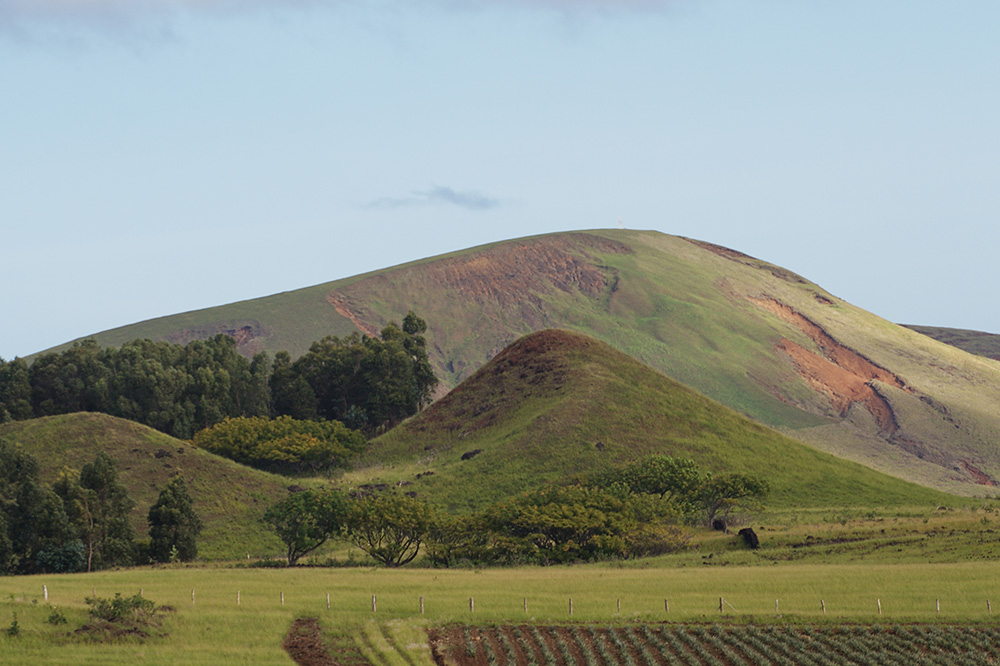
Wild horses and Ahu Tepeu
One of the island’s problems is wild horses. They trample and destroy plantations and crops, spread diseases, and attack tourists who are unaware of their freedom and savagery. In 2017, with a population of four thousand people, there were seven thousand horses. It’s said that now the situation is being resolved. I don’t know what the island will look like without these free spirited animals hanging around.
Caldera of Rano Kau volcano
Caldera is a sort of a large cauldron or a bath of volcanic origin. There are slightly more than seventy known formations of this kind. A couple of them are situated on Venus and Mars, but there are also closer ones — in Antarctica, New Zealand, the Philippines and, of course, Easter Island. You can see one of them in the picture below.
Well, what can I say? Seen one caldera, seen them all. Basically, nothing special.
Sunset in Ahu Vai Uri
Every evening, not far from the capital of the island and its only city, Hanga Roa, an unprecedented performance takes place. This sunset was worth doing such a long way.
It’s strange, but there are almost no tourists here. Five or six Japanese, a romantic German couple — and that’s it. Why? Hard to say. Chilean airlines flights are not tiresome. The only cinema in the city has been showing the same film – filmed on the island – for the last twenty years and, from time to time, one of the relatively new American blockbusters, which you can watch all on the same plane — 5 hours of flight off the coast of Chile. There is also a disco. But it’s hard to believe that about three hundred people arriving on the island every day spend time there.
Seven p.m. Another half hour and the sun will quickly fall into the water, revealing a defenseless sky with large pebbles of cleanly washed stars. Silence. Only the sound of the surf and the hoarse grumbling of the cicadas.
